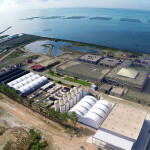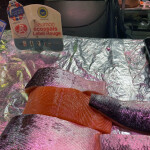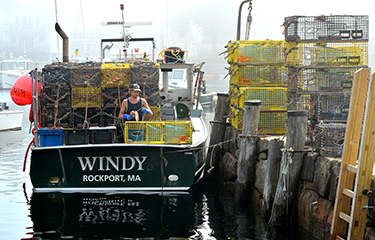The U.S. state of Maine recently passed an act to create a Lobster Innovation Fund to provide financing to commercial fishermen to test new lobster fishing technologies, just days before the Massachusetts Division of Marine Fisheries (DMF) released a report finding a full transition to ropeless lobster gear would cost the fishery in more ways than just higher equipment costs.
The new fund, created through a law signed by Maine Governor Janet Mills on 27 July, would pay lobstermen to test new gear to learn how the gear would impact their fishing. The testing would add to the growing body of scientific data obtained through studies of alternative in both Maine and Massachusetts.
Maine and Massachusetts have been grappling with increased interactions with the critically endangered North Atlantic right whale. Massachusetts’ own attorney general has pushed for more protections for right whales despite objections from the Massachusetts Lobstermen’s Association.
The push to reduce the risk of right whales being entangled in vertical lines has led to the development of alternative gear types, including on-demand, or “ropeless” fishing gear that can eliminate the vertical buoy lines that can entangle the whales.
The push for ropeless gear led the Massachusetts DMF to launch a multi-year study examining how it might impact landings and costs in Massachusetts’ lobster fishery. Massachusetts has the second-largest lobster fishery in the U.S., behind Maine, with a value in 2019 – the latest year data is available – of USD 95 million (EUR 86 million).
According to the latest report from the study, released on 31 July, if ropeless gear had been used in the lobster fishery over the second half of the last decade, it would have resulted in a USD 40 million (EUR 36 million) decline in revenue every year – and 3.5 million fewer pounds of lobster landed.
Past analysis of the cost of on-demand lobster gear has adequately examined the cost of traps each fishing vessel would need to acquire, but failed to account for how the operational changes resulting from the new gear could impact lobstermen, the report found.
The added costs partially relate to how fast fishermen would be able to access and haul in their traps. According to the 34-page report on the study, the average time to haul each trap would increase by almost two minutes across all Massachusetts lobster fishing vessels, “inversely proportional to the number of traps fished per trawl.” The conclusion was reached based on data from the Northeast Fisheries Science Center’s on-demand gear testing, which determined the average length of time it takes to complete each step of the hauling process.
To use on-demand gear, lobstermen must first locate the traps using a wireless signal, which takes longer than a traditional static line buoy. From there, most steps are the same, until the lobstermen replace their traps. For static-line gear, the trap can be replaced normally, but on-demand gear requires the ropes to be recoiled and repacked correctly each time so that the trap can deploy from the bottom correctly.
The estimates were also based on interviews with fixed-gear fishermen, who said that they’d expect their trip lengths to remain consistent while using on-demand gear. This means the increase in time on each trap, multiplied over thousands of traps, would on its result in lower productivity for each lobster vessel.
“In other words, lobster fishermen using on-demand gear would experience a reduction in gear throughput throughout each trip resulting in a reduced number of traps fished proportional to the increased amount of time required to haul the gear,” the report said.
According to the DMF, certain types of on-demand gear require so much more time to operate, the loss of productivity would end up costing as much, if not more, than the purchase price of the gear itself.
“In order to paint a more complete economic picture, future estimates of the costs of on-demand gear use in lobster fisheries should account for operational factors in addition to the costs of acquiring the gear,” the report said. “While the on-demand gear use scenario we present here was designed to represent the upper bounds of potential economic impact to lobster fishing operations, additional operational issues that are unknown or poorly characterized at this time could increase costs further.”
Photo courtesy of Bill Morson/Shutterstock







